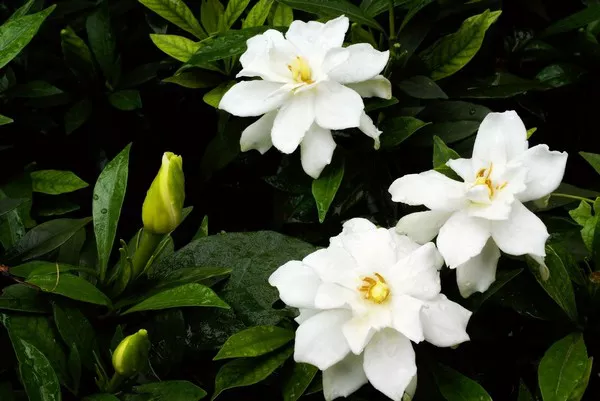In the vibrant world of flowers, few specimens stand as tall and proud as the gladiolus. With its towering stalks adorned with a multitude of blossoms in a spectrum of hues, the gladiolus commands attention and admiration wherever it blooms. But what exactly is the gladiolus, and what sets it apart from other floral varieties? In this article, we embark on a journey to unravel the intricacies of this captivating flower, exploring its origins, characteristics, cultivation techniques, symbolism, and much more.
Origins and Botanical Characteristics:
The gladiolus, scientifically known as Gladiolus spp., belongs to the iris family, Iridaceae, and encompasses over 260 species native to Europe, Asia, and Africa. Its name is derived from the Latin word “gladius,” meaning sword, aptly describing the shape of its leaves. These perennial flowering plants are characterized by their tall, erect stems, which can reach impressive heights of up to six feet, crowned by striking, funnel-shaped blossoms.
One of the defining features of the gladiolus is its distinctive flower structure, comprising six petal-like tepals arranged in a trimerous symmetry. The flowers come in a myriad of colors, including but not limited to shades of red, pink, orange, yellow, purple, and white, with various patterns and markings adding to their allure. Additionally, many cultivars boast captivating bi-colored or multi-colored blooms, further expanding the aesthetic diversity of the gladiolus.
Cultivation and Care:
Cultivating gladiolus can be a rewarding endeavor for both seasoned gardeners and novices alike. These versatile plants thrive in temperate climates, preferring well-drained soil and plenty of sunlight. Planting typically occurs in the spring, with corms (underground storage organs akin to bulbs) being buried at a depth of around four to six inches and spaced several inches apart to allow for proper growth and development.
Proper care is essential for the health and vitality of gladiolus plants. Adequate watering, especially during periods of active growth and flowering, helps prevent dehydration and ensures robust blooms. Additionally, providing support in the form of stakes or cages can help stabilize the tall stems and protect them from damage caused by wind or rain. Regular fertilization with a balanced nutrient solution further promotes vigorous growth and enhances flower production.
Propagation methods for gladiolus include division of corms and harvesting of seeds, offering opportunities for expansion and experimentation in the garden. By carefully selecting and nurturing desirable traits, breeders have developed an extensive array of cultivars, each with its own unique characteristics and appeal.
See Also: How to grow gladiolus flower?
Symbolism and Cultural Significance:
Throughout history, the gladiolus has been imbued with various symbolic meanings and cultural significance. In ancient Roman times, the flower was associated with gladiators, owing to its sword-shaped leaves and purported ability to bestow strength and protection. In the language of flowers, known as floriography, the gladiolus carries connotations of sincerity, strength of character, and remembrance, making it a popular choice for commemorating significant life events such as birthdays, anniversaries, and funerals.
In different cultures around the world, the gladiolus holds diverse interpretations and uses. In Japan, for instance, it is regarded as a symbol of courage and resilience, while in South Africa, it is often included in traditional medicine for its purported healing properties. Furthermore, the gladiolus features prominently in floral arrangements and bouquets, adding vertical interest and vibrant color to weddings, celebrations, and ceremonial occasions.
Modern Applications and Future Prospects:
Beyond its ornamental value, the gladiolus has found practical applications in various fields, including horticulture, floristry, and pharmaceuticals. Breeders continue to develop new cultivars with improved traits such as disease resistance, longer vase life, and novel color combinations, catering to evolving consumer preferences and market demands.
In the realm of science, researchers are exploring the potential medicinal properties of gladiolus extracts, investigating their efficacy in treating conditions ranging from inflammation and pain to microbial infections and cancer. Preliminary studies have yielded promising results, highlighting the therapeutic potential of this remarkable flower.
Looking ahead, the gladiolus is poised to remain a beloved favorite among gardeners, florists, and enthusiasts worldwide. As advancements in breeding techniques and cultivation practices continue to expand the palette of available varieties, the allure of this iconic flower shows no signs of waning.
Conclusion
In conclusion, the gladiolus stands as a testament to nature’s beauty and resilience, captivating hearts and minds with its graceful form and vibrant colors. From its humble origins in distant lands to its widespread cultivation and symbolic significance, this remarkable flower has woven itself into the fabric of human culture and imagination.
As we celebrate the splendor of the gladiolus, let us not only admire its aesthetic appeal but also appreciate the deeper meanings and connections it embodies. Whether adorning a garden bed, gracing a floral arrangement, or inspiring scientific inquiry, the gladiolus continues to enchant and inspire, reminding us of the enduring power and wonder of the natural world.


